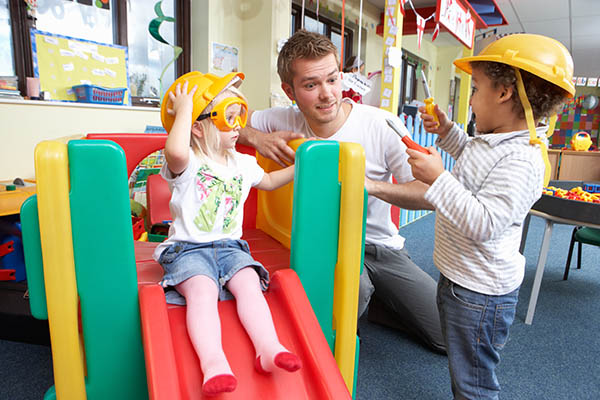Resources for Safe Playgrounds
Playgrounds are a fundamental part of the childhood experience and should be safe havens for children. The resources on this page feature safety guidelines for designing, constructing, and maintaining playgrounds.
 Making sure environments are safe allows children to explore and learn with less risk. Promoting a culture of safety prevents injury and illness.
Making sure environments are safe allows children to explore and learn with less risk. Promoting a culture of safety prevents injury and illness.
Review these resources to learn more about how to create safe environments.
Playgrounds are a fundamental part of the childhood experience and should be safe havens for children. The resources on this page feature safety guidelines for designing, constructing, and maintaining playgrounds.
Keep children safe and reduce injuries by having staff learn and continuously practice active supervision. Use these resources to plan for a systematic approach to child supervision.
During the first five years, children constantly acquire new skills and knowledge. Caregivers who know what children can do and how they can get hurt can protect them from injury.
Hazard mapping is a process that Head Start programs can use after an injury occurs. It helps for emergency preparedness planning related to natural disasters.
Review requirements that ensure children are kept safe at all times. This standard addresses safety practices for facilities, equipment and materials, disaster preparedness, hygiene, lead exposure, and more.
Programs that serve young children are required to ensure that policies and procedures are in place to protect children and keep them healthy and safe. This screener will help to identify where programs need to make changes and build capacity to meet children's needs. It also contains best practices and requirements found in the Head Start Program Performance Standards.
Infants depend on their families for food, warmth, and care, and for meeting such basic needs as eating, diapering, sleeping, bonding, and safety. But all babies are unique. Some infants may settle easily and be capable of quickly soothing themselves.
Staff wear latex gloves to prevent contact with bodily fluids. However, allergic reactions to latex do occur. Use these tips to prevent allergic reactions to latex gloves.
Mold is an environmental trigger for allergy and asthma. Learn about the removal of fungal growth, remediation protocols, and the effectiveness of various cleaning strategies.
This tip sheet offers information on the dangers of children's exposure to secondhand smoke. Use facts in this tip sheet to learn what may happen if they expose their children to secondhand smoke.